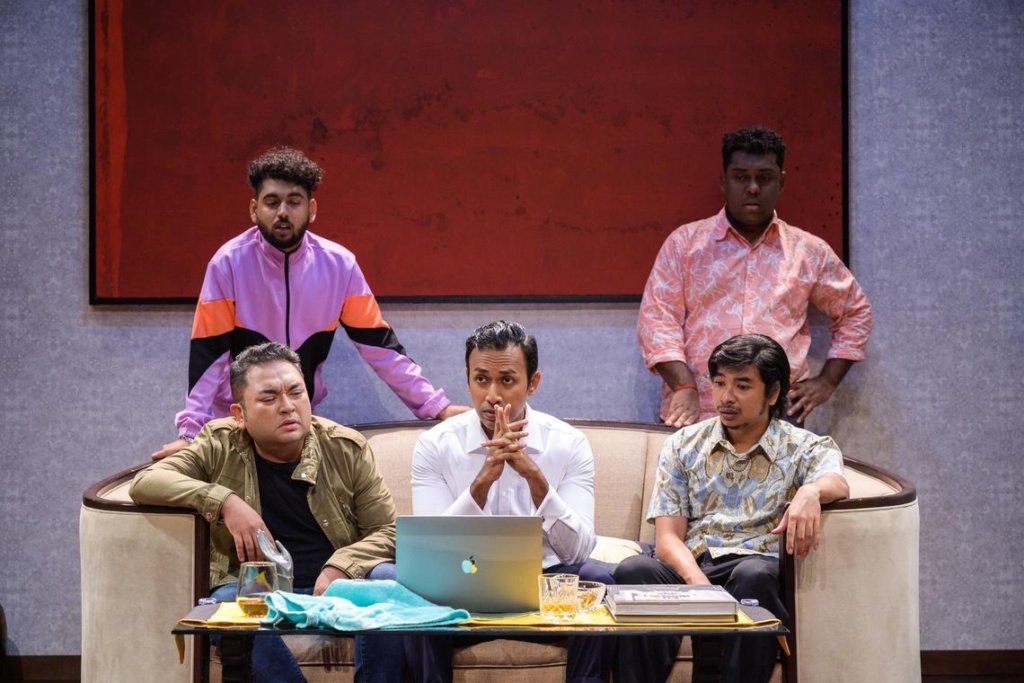SINGAPORE – A total of $300 million has been set aside for the SG Culture Pass initiative announced at Budget 2025 to encourage Singaporeans to attend local performances, exhibitions and experiences.
It is the first incentive of its kind here to target the arts and heritage sector.
Qualifying programmes for the $100 worth of credits, given to all Singaporeans aged 18 and above, must have Singapore citizens or permanent residents playing key roles.
The Ministry of Culture, Community and Youth said on Feb 21 that it will begin accepting from March 10 proposal submissions, which can be related to the literary, performing and visual arts or heritage sectors.
It will take an open-minded approach, welcoming applications from all registered organisations, collectives and independent practitioners.
There will be a focus on in-person activities, rather than virtual ones. Tickets must be sold via authorised ticketing providers to prevent fraud.
Minister for Culture, Community and Youth Edwin Tong, who gave the details at a ministerial town hall for the arts and culture sector on Feb 21, said that the raison d’etre of the culture pass is to get those who have not attended local programmes to do so, and “after the first taste, some will come back for more”.
Speaking at the Singtel Waterfront Theatre, he entreated practitioners to “compete for and find ways to reach new audiences”.
“I encourage all of you to take up this challenge, put up compelling offerings to attract new audiences, (and) find different ways of using the culture pass to retain them,” he said.
In time, all eligible offerings will be listed on a single website, which will function as an easy directory for those not in the know.
Mr Tong added: “The significance of the SG Culture Pass goes beyond the dollar value. I see it as a catalyst that can help shift mindsets towards favouring local arts and culture offerings more, and not always say, ‘We will pay well for foreign content, but not so well for local content.’ We want to break this mould.”
The SG Culture Pass, which can be redeemed from Sept 1, 2025, to end-2028, marks an important shift in strategy by the Government to foster consumption of the arts.
Whereas accessibility and exposure efforts in the past largely focused on making programmes free to attend, the SG Culture Pass protects the labour of local artists and heritage workers and ensures people do not take their creations for granted.
Arts and heritage practitioners said getting Singaporeans to pay for these activities will, over time, encourage people to accord the same prestige to shows produced here as they do international, imported productions, which many misguidedly continue to consider as superior.
Speaking to The Straits Times at the town hall, a visibly emotional Meenakshy Bhaskar, artistic director of Indian dance company Bhaskar’s Arts Academy, said: “It’s a big win – $100 (a person) may seem a pittance, but $300 million is a lot of money. It’s our money coming back to us for our own programmes.
“As a child, people used to say to me, ‘Oh, Singapore has no culture’, and I would get really angry, because my parents are artists. I’ve seen the evolution – we’re ready for the arts in every family.”
Theatremaker Chong Tze Chien, who has been appointed the next director of the Singapore International Festival of Arts, was one of many who compared the SG Culture Pass credits to CDC vouchers, which are used at hawker centres and heartland shops.
He said: “A lot of CDC vouchers have gone into raising the profile of our neighbourhood vendors. The very fact that there (will be) a page (for the SG Culture Pass) that you click on – that in itself – is actually a campaign, is advocacy. Many have zero idea that so many performances are going on.”
It is important that the pass is restricted to local productions, he added. “Being a tiny nation with a shorter history, we always have that insecurity about our local arts and local producers. The professionalisation of the arts and culture effectively started only in the 1980s. We don’t place a very high premium on local, and we automatically accord more status and value to anything that’s foreign.”
HuM Theatre’s creative director Daisy Irani said: “What delights me most is that this is a strong message from the Government that the arts and culture are as necessary ingredients to enriching our society as food and recreation.”
Art gallery Artualize’s founder Low Sok Leng hopes the initiative can aid her ambitious dream of placing a piece of art in every Singaporean home.
“Most visual arts exhibitions in Singapore are already free, so the art galleries and the local artists can’t really ‘benefit’ from the pass. The only way to also help the local artists at the same time is to allow the credits (to be used) for the purchase of artwork,” said Ms Low, who is also the daughter of second-generation artist Low Hai Hong.
One of the first occasions where the culture pass idea was mooted was in 2019, when then Nominated MP Terence Ho proposed the idea of free culture credits to offset the cost of tickets in a bid to reverse shrinking audience numbers.
He said at the time that the format of such an initiative could take after ActiveSG credits, which are used for public gyms, swimming pools and other sports facilities. The “pragmatic” mindsets of Singaporeans, who baulk at paying sustainable amounts for arts performances, must be helped along, he had said.
Pleased that his suggestion has now been taken on board, Mr Ho, who is executive director of the Singapore Chinese Orchestra, said he has told his orchestra to come up with promotions so that it can capture these culture pass dollars, such as pricing a whole season of the orchestra’s performances at about half ofthe total credits.
Asked if $100 a person is too meagre a sum, he said he hoped “this is only the beginning of the story”.
Citing the example of the Cultural Matching Fund, which provides dollar-for-dollar matching for cash donations to arts and heritage charities and has been periodically topped up, he said a high use rate for culture pass credits could motivate the Government to do the same for the new initiative.
But there remains some head-scratching, particularly over the long three-year timeframe given for people to use these credits. Mr Tong had said this was to give practitioners time to plan and organise their offerings to take advantage of the pass.
Arts NMP Usha Chandradas agreed, saying the timeline allows as many groups as possible to figure out the qualifying conditions.
However, she added: “But it does also raise questions as to whether there will be mid-term reviews of the scheme’s efficacy, or if top-ups to the credits can be made while the scheme is ongoing.
“If these are possible, then the three-year timeframe may not really be an issue.”
Smaller players on the scene are also worried that all the funds will end up being monopolised by larger and more established groups that are already major grant recipients, and that they will not get a look-in.
Ms Low said institutions like National Gallery Singapore and the Singapore Art Museum, for example, “should not be fighting with commercial entities for this little pie”.
Tamil-language Agam Theatre’s founder and managing director Subramanian Ganesh said the authorities should take the chance to encourage audiences to actively seek out diverse productions beyond the mainstream, “regardless of language or medium”.
Former Books Kinokuniya Asia-Pacific senior store and merchandising director Kenny Chan said he hopes that amid the glut of offerings, people will remember the written word. Mr Tong has said in closed-door meetings that books will be eligible for the credits.
Mr Chan asked: “Why not book vouchers to be redeemed for publications by local publishers, or include bookshops and other outlets selling literary works? Culture should include the literary arts.”
Join ST’s WhatsApp Channel and get the latest news and must-reads.

